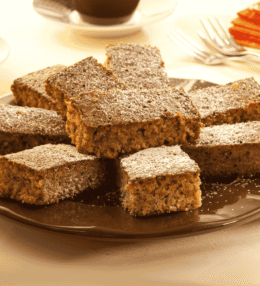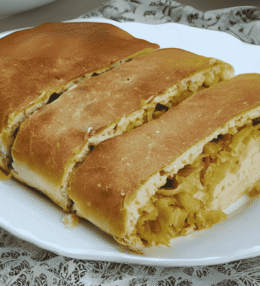
- View
Table of Contents
ToggleAukstā zupa is one of Latvia’s most beloved summer dishes, a vibrant cold beetroot soup that’s as refreshing as it is colourful. Served chilled and often enjoyed during the warmer months, it’s more than just a way to cool down, it’s a dish tied closely to the country’s seasonal rhythms and local produce.
This soup often makes its appearance in homes and cafes alike as soon as the sun lingers a little longer. Its striking pink hue might catch the eye first, but it’s the tangy, creamy flavour and satisfying crunch that keep people coming back. It’s a dish that surprises and comforts all at once.
Want to dive deeper into Latvian Cuisine? Don’t miss our post on 17 Traditional Latvian Foods to Try
What Is Aukstā zupa?
Aukstā zupa translates simply to cold soup, but its flavour and cultural role are anything but plain. It is typically prepared with kefir or buttermilk, beetroots, fresh vegetables, and hard-boiled eggs, all served icy cold and often with a side of boiled potatoes.
While that may sound like an unusual combination to the unfamiliar palate, it quickly becomes clear why Latvians hold this dish so dear. The mix of sweet beetroot, cool dairy, and crisp cucumbers creates a balance that is deeply satisfying, particularly on a hot summer day.
Ingredients and Taste
The heart of Aukstā zupa lies in its freshness. Grated beetroots lend their signature colour and subtle sweetness, while chopped cucumbers and radishes bring crunch. Spring onions add a mild sharpness and herbs like dill provide a fragrant lift that feels unmistakably northern European.
Kefir is traditionally used for the base, its tangy flavour offering a gentle sourness that cuts through the sweetness of the beets. Some versions use buttermilk or a mix with sour cream, depending on household tradition. Hard-boiled eggs, diced and stirred in, make the soup more substantial.
The result is a creamy yet crisp texture, cool on the tongue with a light acidity. It’s the kind of soup that doesn’t overwhelm but lingers in memory. A side of warm boiled potatoes helps ground the dish, offering contrast in both temperature and texture.
A Taste of History
Cold soups have long been a feature of Baltic and Eastern European cuisines, and Aukstā zupa is Latvia’s unique contribution to that family. It reflects the region’s reliance on seasonal, easily preserved ingredients and the ingenuity to craft something flavourful and restorative.
Beetroot has grown in Latvian soil for centuries, valued for its storage qualities and earthy flavour. Combining it with fermented dairy came naturally, especially in a region where kefir is a dietary staple and fermentation plays a central role in food culture.
The soup’s widespread popularity took off during the 20th century, when it became a favourite in school canteens and summer kitchens alike. Today, it is cherished not only for its taste but for the nostalgia it carries, a reminder of summers past, of gardens in full bloom, and of the joy of simple, seasonal eating.
Aukstā zupa remains a cultural marker, a bowl of pink promise that bridges generations and seasons. Trying it is more than just a taste of Latvia, it’s a glimpse into how a nation finds comfort and connection through food.

Latvian Aukstā Zupa (Cold Beetroot Soup)
Ingredients
- 3 medium cooked beetroots peeled and grated
- 1 medium cucumber diced
- 4 hard-boiled eggs peeled and halved
- 500 ml kefir or cultured buttermilk
- 150 ml sour cream
- 1 bunch of spring onions finely sliced
- 1 bunch of fresh dill finely chopped
- Juice of half a lemon or to taste
- Salt to taste
- Freshly ground black pepper to taste
- 400 g new potatoes scrubbed and boiled (for serving)
Instructions
- To begin, cook the beetroots in boiling water until tender, about 40 minutes if using raw beets. Once cool, peel and grate them using a coarse grater. This will form the earthy, vivid base of the soup. Chill the grated beetroot in the fridge for at least 10 minutes.
- While the beetroot is chilling, boil the potatoes in salted water until fork-tender, about 15 minutes. Drain and set aside to cool. These are traditionally served on the side and dipped into the soup as eaten.
- In a large mixing bowl, combine the cold grated beetroot, diced cucumber, sliced spring onions and chopped dill. Toss gently to distribute the herbs and vegetables evenly throughout the mixture.
- Add the kefir and sour cream to the bowl. Stir thoroughly until the soup base becomes smooth and takes on a pale pink colour. Use a wooden spoon or spatula to blend slowly, ensuring the sour cream is fully integrated.
- Season the soup with salt, black pepper and a generous squeeze of lemon juice. Mix well, then taste and adjust the acidity or saltiness if needed. Traditional Latvian kitchens favour a bright, tangy flavour profile.
- Cover the bowl with cling film and place it in the fridge to chill for at least 1 hour. This resting time helps the flavours meld and gives the soup a sharper, cleaner taste.
- Boil the eggs if not already prepared. Once cooled, peel and cut them in half or quarters. These will be added as a topping when the soup is served.
- Arrange the cooled, boiled potatoes on a serving plate. Lightly sprinkle them with sea salt and dill if desired. These can be served whole or halved, depending on size.
- Ladle the cold soup into individual bowls. Top each portion with a halved boiled egg and an extra sprinkle of dill. Serve with the boiled potatoes on the side for dipping or eating alongside. A chilled glass of kefir or rye bread can also accompany it for a more traditional spread.







Leave a Review